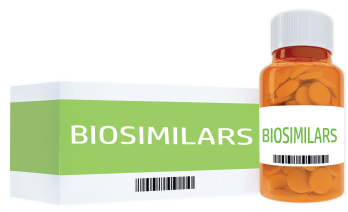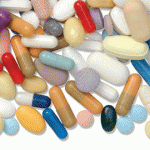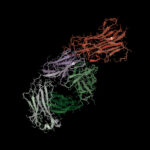
hafakot / shutterstock.com
CHICAGO—“We have got to get over this hump. We have got to try new stuff,” said Jacqueline M. Fritz, RN, MSN, CNS, to the audience gathered on the final day of the 2018 ACR/ARHP Annual Meeting, referring to the subject of biosimilars. Ms. Fritz, the owner and coordinator of education at the Medical Advancement Center in Cypress, Calif., where she teaches RN/BSN programs at various facilities, brought the topic of biosimilars to the Annual Meeting and moderated the session.
Ms. Fritz’s interest in the topic stems from her observation that many healthcare providers are uncomfortable prescribing biosimilars. After investigating, she realized many of these perceptions are unfounded.
Ms. Fritz then introduced Josephine Garnoc, MSN, RN, CRNI, OCN, director of nursing, Beaumont Hospital, Grosse Pointe, Mich.. Ms. Garnoc agreed with Ms. Fritz, explaining that in her clinical experience, many patients can’t afford the high cost of biologics, but they question the safety and efficacy of biosimilars.1 Healthcare providers are often unwilling or unable to reassure them that biosimilars are a reasonable option.
The U.S. Congress recognized that although only 1–2% of patients in the U.S. are on biologics, biologic use accounted for approximately 38% of healthcare costs.1 To address this, Congress passed the Biologics Price Competition and Innovation Act of 2009 (BPCI Act), which created an abbreviated approval pathway for biologic products that are demonstrated to be “highly similar” to or “interchangeable” with a U.S. Food and Drug Administration (FDA)-approved biological product.
Biosimilars are intended to decrease the cost of biologics and allow more patients access to these products. Several biosimilars have now been approved for use in the U.S., and they share a core name with the reference product. These include: filgrastim-sndz (Zarxio), biosimilar to filgrastim (Neupogen); infliximab-dyyb (Inflectra), biosimilar to infliximab (Remicade); infliximab-abda (Renflexis), biosimilar to infliximab (Remicade); etanercept-szzs (Erelzi), biosimilar to etanercept (Embrel); and adalimumab-atto (Amjevita), biosimilar to adalimumab (Humira).
Biosimilars have a primary amino acid sequence like the originator, and many are glycosylated. The FDA states, “a biosimilar is a biological product that is highly similar to the reference product notwithstanding minor differences in clinically inactive components.” In other words, no clinically meaningful difference between biosimilars and the original biologic can exist.
The FDA approves biosimilars through a stepwise process that evaluates the totality of evidence, biological structure, amino acid sequence, modifications, product stability/quality, binding affinities and mechanism of action. The FDA places an emphasis on comparable pharmacokinetic/pharmacodynamic properties to the reference product. It looks at the totality of this evidence before the biosimilar enters clinical trials.
Although many patients cannot afford the high cost of biologics, they question the safety & efficacy of biosimilars.
If the biosimilar passes the initial review, then the sponsor must perform at least one clinical trial that is a head-to-head comparison with the reference product. The comparability trial is designed to confirm similar efficacy and safety in a sensitive population and is based upon the null hypothesis that the biosimilar is either inferior or superior to the reference product based upon predetermined equivalence parameters. The phase 3 trial must be of a long enough duration to reflect disease state and to detect any clinically important adverse events. The results of the biosimilar and reference product trial must mirror the initial endpoints. A quick search reveals many clinical trials designed to demonstrate the efficacy of biosimilars are currently underway.
The FDA approves the biosimilar for licensure once the sponsor has demonstrated any differences between the biosimilar and the originator are not clinically or statistically meaningful for the primary endpoint. Once the sponsor has demonstrated equivalence, it can then extrapolate clinical data across the multiple indications of the reference drug. This extrapolation eliminates the very costly and time-consuming process of running phase 3 trials for each indication and population.
Despite these stringent requirements by the FDA, healthcare providers can be reluctant to try the biosimilars. This may be due to a misperception that biosimilars are the same as generics. An examination of the approval process for biosimilars, however, reveals it extends beyond that required for generics. Biosimilars must have the same mechanism of action as the originator product and be administered in the same way.
Ms. Garnoc emphasized healthcare providers have an important role in not only educating themselves about biosimilars, but also educating their patients. She pointed the audience to the “Consensus-based recommendations for the use of biosimilars to treat rheumatological diseases” published in 2018.2 The recommendations were written by an international group of 25 experts and patients. The authors reviewed 29 full text articles, as well as conference abstracts, and wrote five overarching principles and eight consensus recommendations regarding the evaluation and use of biosimilars to treat rheumatological diseases.
Lara C. Pullen, PhD, is a medical writer based in the Chicago area.
References
- Mulcahy AW, Hlávka JP, and Case SR. Biosimilar cost savings in the United States. 2017. Rand Corp.
- Kay J, Schoels MM, Dörner T, et al. Consensus-based recommendations for the use of biosimilars to treat rheumatological diseases. Ann Rheum Dis. 2018 Feb;77(2):165-174.



